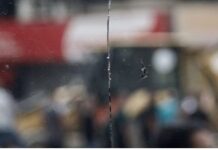Eliyahu Freedman
Al-Jazeera / May 29, 2023
The Israeli minister’s visits have deep roots in religious Zionism. But his approach is now finding new takers too.
Itamar Ben-Gvir’s second visit to Jerusalem’s Al-Aqsa Mosque compound as Israel’s national security minister on May 21 represents a dangerous mix of religion and politics.
Ben-Gvir was seen standing and reading off his phone, apparently in prayer. Such an act would be forbidden under the current “status quo” governing Al-Aqsa, referred to as the Temple Mount or Har Habayit by Jews, even though a small group of Orthodox Jews is increasingly finding ways to pray on the holy site.
Shortly after his morning visit, Ben-Gvir tweeted: “Hamas’ threats don’t intimidate us. I ascended to Har Habayit! Jerusalem is our soul, the Negev and Galil is our spirit and we have to act on behalf of [both]!”
Responding to Ben-Gvir’s visit, Hamas politician Basem Naim told Al-Jazeera, “Israel and its government and people bear the full responsibility for the continued provocation to our people and desecration of [Al-Aqsa’s] holiness.” He said “preventing maniacs [from entering Al-Aqsa] even if they are ministers” was a part of Israel’s “responsibility”.
On the face of it, though Ben-Gvir’s visit was provocative, its timing could suggest a political compromise. He went to Al-Aqsa after the controversial “flag day” march that marks Israel’s capture of East Jerusalem in 1967. On the day of the march itself, Ben-Gvir joined the parade in the Muslim Quarter of the Old City, even though his wife Ayala Ben-Gvir and other members of Prime Minister Benjamin Netanyahu’s government toured Al-Aqsa grounds. Within the Al-Aqsa compound, several members of Netanyahu’s Likud party were recorded singing the Israeli national anthem Hatikva with the Dome of the Rock in the background.
Yet Ben-Gvir’s actions on May 21, which were condemned by Jordan, the US State Department and others, are only the latest attempt at pushing the envelope in a centuries-old conflict over what Orthodox Jews discuss as “ascending to the Temple Mount”. And there are early signs that such controversial visits to Al-Aqsa are beginning to resonate with some sections of the Israeli population that previously opposed them.
Centuries of relative calm
In the medieval period, there was consensus among Jewish, Christian and Islamic scholars about the ancient holiness of Al-Aqsa site, including the presence of the Jewish temples. In Islam specifically, the special status of the city gave birth to an entire genre of writing known as Fada’il al-Quds or “literature in praise of Jerusalem”. According to Nimrod Luz, the author of the report, Al-Haram al-Sharif in the Arab-Palestinian Public Discourse in Israel, it was even a point of pride for early Muslims for Al-Aqsa to be associated with Israelite prophets and kings such as David, a revered figure in the Quran, and first conqueror of Jerusalem.
For Medieval Jews, who lived under Islamic rule, a debate arose regarding the religious permissibility of visiting Al-Aqsa compound, given the special commandments in Judaism that safeguard the area’s unique holiness. Contemporary Temple Mount activists are proud to highlight a letter written by the great Egyptian-Jewish sage Maimonides, who describes in the 12th century visiting and praying on Al-Aqsa.
But these discussions were of a religious — not political — nature.
The modern debate
In the modern period, Jewish nationalism “split Orthodox Jews into two main groups”, according to Motti Inbari, author of Jewish Fundamentalism and the Temple Mount and professor of Jewish Studies at the University of North Carolina in Pembroke.
The first group was led by Rabbi Abraham Isaac Kook (1865-1935), considered the spiritual father of Religious Zionism. Kook saw the successes of the Zionist movement, such as the Balfour Declaration — under which Britain committed to the creation of a “national home” for Jews in Palestine — from a “messianic point of view”, said Inbari.
That view held that the journey of Jewish “redemption” would culminate with the “reconstruction of the Temple and the renewal of the Davidian Kingdom” per Inbari.
The second camp of Orthodox Jews, explains Inbari, referred to today as “Ultra-Orthodox”, opposed this vision of religious Zionism. They saw “no great [religious] value in the State of Israel” and no special theological meaning to the Zionist movement’s conquest of Palestine”.
Following the Israeli capture of Jerusalem in June 1967, in which an Israeli flag was temporarily flown above the Dome of the Rock, Shlomo Goren, chief rabbi of the conquering Israeli forces and a leading religious Zionist, spoke to the Jewish soldiers: “Today you have fulfilled the oath of generations: ‘if I forget thee, o Jerusalem, let my right hand forget its cunning!’ Indeed, we did not forget thee, Jerusalem city of our sanctity and home of our glory.”
The Ultra-Orthodox Jewish response to June 1967 was also rapid and unequivocal, first delivered across Israeli radio waves merely hours after the Old City was captured: Jewish law strictly prohibits entry to Al-Aqsa Mosque compound for all Jews owing to the sanctity of the site.
Over the years, this view has been repeated by leading Orthodox Jewish voices and has been the consistent view of the Chief Rabbinate of Israel.
The Oslo panic
Still, against the majority of his rabbinic peers in 1967, Goren began developing a novel approach in Orthodox Jewish law to permit entering the Temple Mount.
“[Goren] came up with this argument saying that if we would map the Temple Mount, we could figure out where the Holy of Holies was, and then figure out the permitted locations [for Jews to enter] on the Temple Mount which are not out of bounds,” Inbari said. The “Holy of Holies” refers to the innermost sanctum of each of the Jewish temples, and is the key for drawing a map of where the ancient temples may have stood — many Jewish scholars identify the location of the Holy of Holies with the Sakhra stone in the Dome of the Rock.
Goren was never alone, but his view remained a minority position even within the Religious Zionist camp in the decades following 1967.
But the Oslo Accords of 1993 created a new panic within the Religious Zionist camp. Not only could land compromises lead to the loss of Jerusalem’s Old City from a future Jewish state, but Oslo could represent a theological step backwards in the plan to rebuild a Jewish temple.
“The Oslo Accords, kind of created … some kind of a feeling that [the messianic] end is not going to happen, or it’s not going to happen in the way they were open to,” Inbari said.
The result: an urgency among the Religious Zionists. In February 1996, the orthodox “Rabbinic Council of Yesha” (an acronym for Judea, Samaria and the Gaza Strip) called for each congregational rabbi to ascend the Temple Mount. The idea was to make it harder for an Israeli government to negotiate away land compromises.
Moving forward
Today, even putting aside the politically explosive visits of Israeli politicians like Ben-Gvir, more and more Jews are ascending the Temple Mount. A recent 2023 report estimates a 16 percent increase from last year, “with an average 140 Jewish visitors ascending” daily.
And it is not just Religious Zionists, though they are the single largest group of Jews going to Al-Aqsa compound, said Hayim Alba, a member of the non-governmental “Temple Mount Administration”, whose leader Rabbi Shimshon Elboim was photographed walking next to Ben-Gvir during his visit.
“[In] the last week, many buses of [Ultra-Orthodox Jews] entered for the first time. Every day there are some [Ultra-Orthodox] who are entering for the first time,” Alba said.
Yareah Tucker, an adviser to the United Torah Judaism (UTJ), the political party which represents the largest faction of Ultra-Orthodox Jews in Israel and is led by a small number of Jewish religious scholars, insists that this is “not because of the rabbis, but because of extremists who are multiplying”. Tucker means that more Ultra-Orthodox Jews are disobeying the official instructions of the leading Rabbis of the Ultra-Orthodox community regarding entry to the Temple Mount, and are rather entering the Temple Mount in spite of their community’s view on Jewish religious law.
Tucker pointed out that Rabbi Gershon Edelstein, the current spiritual leader of the largest bloc of Ultra-Orthodox Jews, recently requested UTJ leader and cabinet minister Moshe Gafni to urge Netanyahu to enforce a prohibition of Jews visiting the Temple Mount in general, “specifically in the current sensitive climate”. In the end, Netanyahu strained relations with the right-wing flank of his coalition – including Ben-Gvir – by suspending Jewish access to Al-Aqsa for the last 10 days of Ramadan for the second consecutive year.
Alba agrees that it is not Ultra-Orthodox rabbis leading the way, but that a more grassroots movement within Ultra-Orthodox Jewry is under way. These members of the Ultra-Orthodox community enter mostly for spiritual reasons currently, though it is hard to predict how nationalist sentiments might develop in the future.
Tucker does not believe that there has been any fundamental shift within the Ultra-Orthodox community, but such processes take time. A leader of a Temple Movement who did not agree to be named told Al Jazeera: “The process is under way … the nucleus of 1,000 Ultra-Orthodox Jews exists.”
“In the end, Ultra-Orthodox Jews will be the most strict in this matter.”
Eliyahu Freedman is a Jewish Buddhist of Iraqi descent teaching and writing on Jewish spirituality and sexuality in Jaffa












